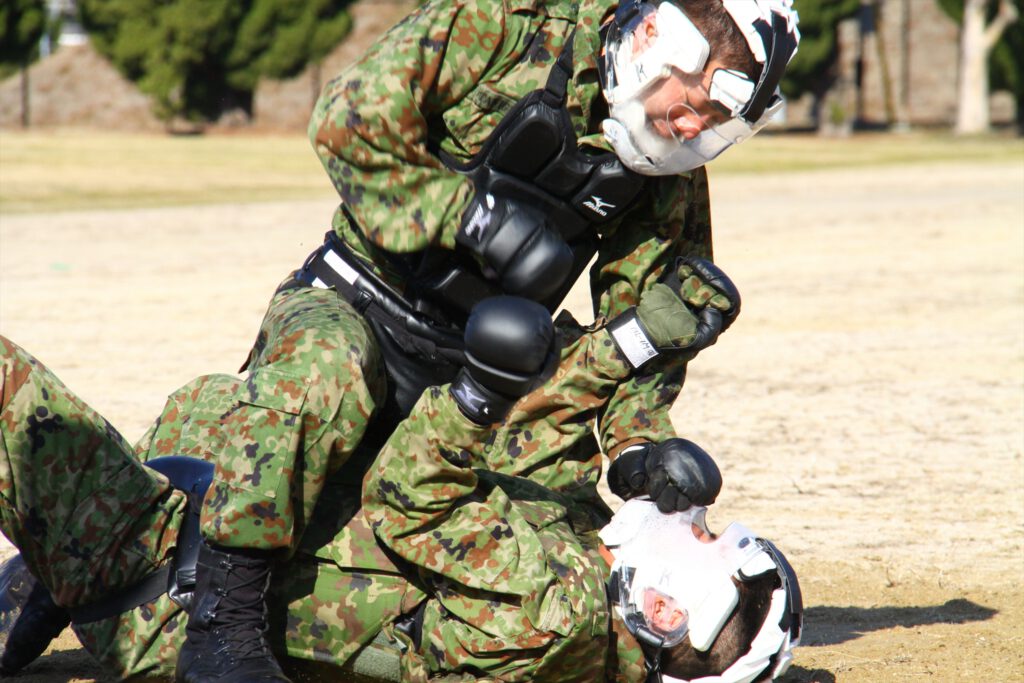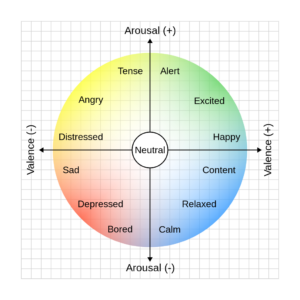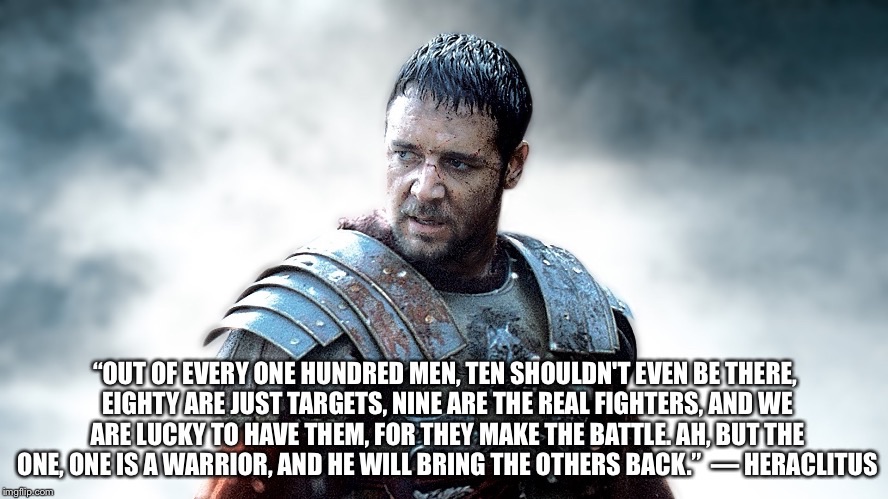When people talk about “martial arts” these days, the topic of “self-defense” usually comes up very quickly. People want to feel safe and a whole industry has developed around this need.

There are books, courses, trainings, “tools” and all of them have in common that a lot of money can be earned with the fear of the people. With what? Exactly with the FEAR.
In order to understand the topic of “self-defense”, we would first like to delve a little into the biochemistry of the brain and explain how this is related to the emotions.
We had already dealt with norepinephrine in the article about “The brain and the images” and saw what it does in the brain. Norepinephrine is a so-called neurotransmitter, a messenger substance that activates certain cells and brain areas through its release, because they have corresponding receptors that react to this molecule. It is a lock-and-key principle: when a neurotransmitter hits the receptor, it fits in there and flips a switch, so to speak, which leads to a reaction being triggered in the cell/area of the brain.
Let’s take a look at the main neurotransmitters of the brain, and their function:
First of all, there is glutamate, which is responsible for the excitation of the brain, and its “counterpart” gamma-aminobutyric acid (GABA for short), which is responsible for calming.
To understand the function of these two mechanisms, let us briefly illustrate how these transmitters can be influenced with beverages:
When you drink coffee or tea, you ingest caffeine. Caffeine causes a blockade of so-called adenosine receptors. Adenosine receptors cause LESS glutamate to be released in the brain, which makes you less alert, i.e. tired. If you now drink an espresso, these receptors are inhibited by the caffeine, more glutamate is released, you become more attentive, thus awake.
A substance that, among other things, ensures that GABA is released is alcohol. So if I drink a glass of wine, there will be more GABA in my brain, which will cause my arousal to decrease. This leads to the familiar effects of alcohol: relaxation and, in higher doses, intoxication and unconsciousness.
The next two neurotransmitters we want to look at are dopamine and serotonin. Both are so-called monoamines and thus belong to the same group as norepinephrine.
What do they do now? Dopamine and serotonin are so-called “happiness hormones” and an increased concentration of these substances feels to happiness, satisfaction and relaxation. A deficiency of these substances leads to dissatisfaction, sadness, listlessness and aggression.
Why this system made evolutionary biological sense is best explained by an example:
Hunger leads to a drop in serotonin and dopamine levels in our brain. You get in a bad mood. At the same time, it leads to the urge to “chase food” (go shopping these days). If I want to hunt my food (let’s assume a hunter-gatherer now), then it requires increased attention to find the prey or plants. So my brain releases more glutamate. At the same time, I am stressed by the hunger and dangers of the hunt (or the crowds at the grocery store…), which leads to increased release of norepinephrine, which also increases our alertness and prepares my body for the physical demands of the hunt by activating my sympathetic system.
Serotonin and dopamine deficiencies thus lead to glutamate and norepinephrine release. Our hunter-gatherer is now tense and excited because he has spotted his prey.
Thanks to the noradrenaline and the associated release of adrenaline, he is able to kill the prey and there is a cozy barbecue at home.
The success of killing the prey, the joy of the group, the eating of the meat and the feeling of satiety lead to a release of dopamine and serotonin, which leads to an excitation of the limbic system, which activates the reward system.
So now the lack of dopamine and serotonin is balanced and our hunter-gatherer is full, happy and satisfied.
So we can say in our brain there is a tension between activated (glutamate release) and deactivated (GABA release) and a tension between satisfied (dopamine and serotonin increase) and dissatisfied (dopamine and serotonin decrease).
A psychological model of emotions and affects that illustrates this is the so-called circumplex model. Serotonin deficiency tends to lead to aggression (box III in the diagram), dopamine deficiency tends to lead to dejection (box IV in the diagram). In reality, of course, it is much more complex, but in a highly simplified way it can be assumed.

But why is all this important now for understanding “self-defense”?
We need to understand what fear does in our brain:
We are in a state of dopamine and serotonin deficiency and strong activation by glutamate, combined with noradrenaline release. The latter, however, only in the case of an acutely present danger.
Thus, in order to be able to protect ourselves competently, we must be able to bring our brain into a state in which we remain capable of action and can use our resources. As we saw in the article on “The Brain and Images“, too much norepinephrine and activation does not get us anywhere, as it puts our mind on the “substitution bench” and we act only instinctively.
In the article on “Streets, Networks and Movement” we saw that we maintain “flow” best when we are “activated” and “excited”. So we need serotonin and glutamate. Physical activity as such already releases dopamine and serotonin, which is why any form of exercise is good for us.
But does that help us with “self-defense”? No.
Why not?
Self-defense is about staying unharmed when we are threatened. What is threat? Someone who threatens us shows aggression, possibly anger or rage, is stressed and aroused.
Through so-called “mirror neurons” in our brain, we pick up on the emotions of the people around us and show them as well.
This means that we also become aggressive when confronted with aggression, or fearful when people around us are fearful.
Aggression and fear are like a virus: ATTACKING.
As we have seen above, too much fear and/or aggression lead to norepinephrine release and thus our mind remains unable to act, the emotions and instincts take over.
So for effective self-defense, I must first know and accept aggression and fear.
But now we get a problem in our society: aggression and fear are blanked out, respectively condemned. Both our own aggression and fear, and the aggression and fear of others.

This brings us to the core problem of the vast majority of “self-defense courses” and their providers.
In order to remain capable of acting when someone shows me aggression, I must be used to aggression and be able and WANT to call it up myself.
But in order to get used to aggression and the associated violence, I have to be exposed to it again and again. This is exactly what makes the “perpetrator of violence”. He comes from a milieu in which aggression and violence are the order of the day. For him, aggression is everyday life. In the worst case, he even likes the kick that violence gives him.
This is not something a “normal” person wants to train, but it is exactly these “normal” people who want to learn to defend themselves.
How to solve this problem? It’s very simple:
You have to pick up the skills that people bring with them. What are those? First and foremost, fear, because fear is in all of us. I have to learn to accept the fear inside me and listen to it.
The, in our eyes, best book written about self-defense is “Gift of Fear” by Gavin de Becker.
In the article “What is reality” we explained here that our brain is constantly perceiving its environment through different channels and that’s where our fear comes in. Our subconscious mind is constantly evaluating what is happening around us.
A situation or a person “doesn’t feel right”, we don’t know why, but something doesn’t fit. This is exactly the impulse we should trust. We should change the side of the street, go into a store or not accept help, a drink etc. from her. Fear puts us in a state of arousal, i.e. glutamate is released and also noradrenaline. We just have to make sure that it doesn’t get too much and that we still remain capable of acting.
If we allow the feeling of fear in us and get used to it, then it does not surprise us as much as when it appears suddenly and massively. We must learn to recognize the small harbingers.
The small physical reactions like clammy hands, a faster pulse, a dry mouth. These precursors are different for everyone and we must learn to recognize OUR stress and anxiety reactions.
Next, we need to learn not to let them overwhelm us. We need something that makes us take action. In the de-escalation courses we give, this is called a “stop phrase.” The occurrence of these physical reactions leads to the phrase I say to myself internally (such as “stay calm”), which leads to my conscious mind catching on to what is happening.
Then I can do the things that help calm me down. For example, taking a deep breath, imagining nice things, rubbing my temples, or even changing sides of the street, calling someone, going to a store, asking someone for help, in other words, all the things that help me calm down in a concrete situation.
Wait a minute, some will say. THAT is supposed to be self-defense? Where is the part about fighting? With becoming defensible? Feeling strong?
Even though many people don’t want to hear it:
Self-defense is 75% attention and de-escalation and only 25% physical action.
The latter does not look now for the “average citizen” like in the cinema, where you hit or kick an attacker and he falls down. Physical action consists of self-protection techniques that are effective and easy to learn.
What can it be?
These techniques must enable me to remain capable of acting when physical violence is inflicted upon me. So I need to learn what happens when I am subjected to punches, kicks and grappling techniques and what I can do so that I don’t immediately go into overload mode.
The point is not to knock the opponent out, but to put myself in a position where I can leave the dangerous situation by escaping.
This can be covering moves so I don’t get hit unprotected, or movement patterns that put me in a position where I can run away. Another option would be to still use legal tools, but that also needs to be practiced over and over again.
What exactly do martial arts do for self-defense now?
Unarmed martial arts expose me to physical violence in every training session. I learn what it’s like to be hit by punches and kicks (but for that I also have to train a martial art that practices with appropriate contact). I learn helplessness and how to overcome it. Helplessness and pain create fear and through the release of norepinephrine, in combination with learned movements, I learn to overcome it.
I learn to DOMINATE my opponent. This dominance is the goal of a martial art. From the dominance of the situation I can act actively. Training enables me to exercise this dominance.
If you now add the handling of bladed weapons, then you can potentiate the whole thing, because blades create even more stress. If I need hard sparring unarmed to simulate helplessness and fear, even blunt bladed weapons bring me very quickly into a state of fear, because you simply can not afford any mistakes.

This is why many traditional schools train without much protective equipment. I have to be afraid of getting hit. It must hurt (but only so much that one is not permanently injured).
But such a training also leads to the fact that one learns to give space to his own aggression and learns to do violence to the opponent (even if controlled). Right. If I want to learn to deal with violence, I have to learn to use violence and for that I have to deal with aggression.
Martial arts reward successful aggression with dopamine, so I learn to accept violence and see its exercise as something good. This is not for everyone.
But even martial arts alone is not enough to be able to defend yourself really effectively because one more point is needed:
The regular contact with real aggression and violence.
At the latest here we are at the point where almost all average citizens will not get ahead.
Regular contact with real violence takes place either in the official environment, the military, closed institutions, “at the door”, or the criminal milieu. Only there can one train to deal with violence in such a way that it becomes something “commonplace.”
This habituation is the key to the formation of neural networks that enable one to remain capable of acting when exposed to aggression and violence.
Real professionals use the fear and violence virus to go directly into “activated” and “aroused” mode. For them, it directly releases glutamate and serotonin.
These individuals are in aggressive/violent situations in a mode like the hunter/gatherer on the hunt: alert, joyfully excited, and calm. They are “in the flow” in the face of violence. Their pulse goes down rather than up, they become calmer rather than more nervous. They are like the tiger in front of the prey: they naturally dominate the situation.
There are genetic conditions, and certain situations before and after birth, that alter our brains to reach this state more easily. People who have such predispositions are then called sensation seekers, but certain personality disorders can also develop from them. It always depends on how one deals with the predispositions, or in which sociocultural context one grows up.
Even there, where violence is dealt with professionally, one looks very carefully at the people who are allowed to work there and not everyone is allowed into such a situation.
Most people, however, do not have this predisposition as sensation seekers and for them, self-defense consists of activation and perception, which then results in the recognition and admission of fear. For them “competence in violence” means to avoid the situation or to escape the situation as quickly and unharmed as possible.
Professional violence competence, on the other hand, also goes hand in hand with “self-defense ability”, but the price for this is also the acceptance and training of one’s own aggression and the ability to inflict violence on other people. One must learn to dominate other people. This can be a dangerous path for one’s own psyche and this is the reason why many traditional martial arts, from a certain degree, have a connection to religion and philosophy. Where there is light, there is always shadow.
So in the “neurobiology of self-defense” we can say that a lack of serotonin makes us aggressive, a lack of dopamine makes us unhappy.
GABA activation makes us careless and tired. Glutamate, on the other hand, makes us alert, as does norepinephrine. However, the latter, if released in excess, can impede our volitional action.
Anxiety causes sudden excitement -> glutamate and norepinephrine release. So you have to make sure to recognize it early and develop courses of action that take care of it that reduce it.
A serotonin deficiency leads to aggression, this can be genetic/epigenetic, or situational. One must learn to deal with this deficiency and seek socially acceptable compensation through the reward system so that I can transition the aggression into a flow state. This is a difficult path in training (or therapy) and not something that can be explained in more depth here.
An excess of GABA leads to lack of concentration and fatigue. In self-defense this is relevant because on the one hand I become unfocused by e.g. alcohol and thus do not have the state of attention to listen to my fear and on the other hand alcohol ensures that I no longer have the attention to suppress my aggression willfully, because that also requires a certain amount of attention. This is the reason why alcohol has a disinhibiting effect: my frontal brain no longer has the ability to control the emotions.
Self-defense must therefore differentiate between professional handling of violence, whose goal must be to establish dominance, and “non-professional” handling of violence, whose goal must be to escape the situation unscathed.
When dealing professionally, I have to learn to deal with the aggression and fear inside me and be able to reach a flow state when I am exposed to aggression, anger or fear.
When dealing with such a situation in a non-professional way, I have to learn to recognize my fear and not let it incapacitate me, so that I can escape the situation as quickly as possible. Legal tools can play an important role in this, but so can getting to know real aggression and experiencing your own helplessness.
Not everyone is made for everything, because each of us has our own brain….
